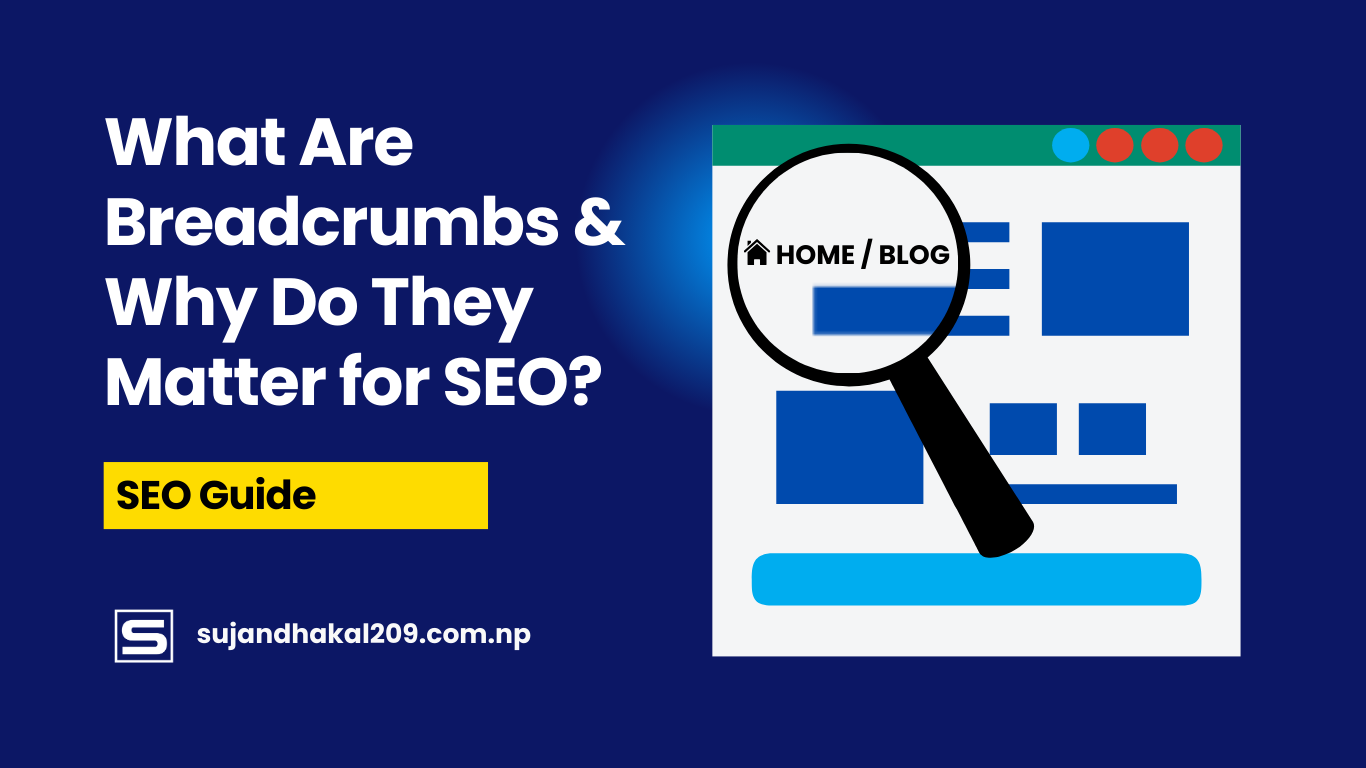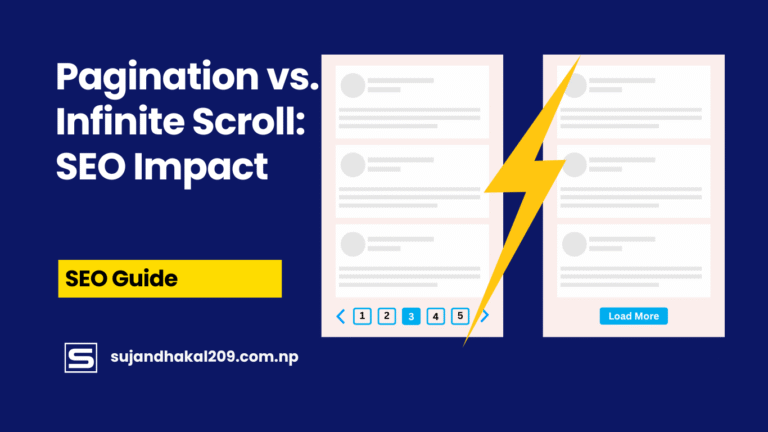Breadcrumbs might sound like something you find in the kitchen, but in the digital world, they’re a powerful tool that can transform your website’s usability and SEO performance. Breadcrumb navigation refers to a trail of links displayed typically at the top of a page, showing users their current position in a website’s hierarchy. Think of it like a GPS for your website visitors—clearly laying out the route they’ve taken and helping them retrace their steps easily.
In today’s competitive online landscape, where user experience and SEO go hand-in-hand, breadcrumbs act as a subtle yet essential feature that not only boosts usability but also helps search engines understand your website’s structure better. Whether you’re running an e-commerce site, blog, or corporate website, incorporating breadcrumb navigation can significantly influence how your pages are ranked and interacted with.
By the end of this guide, you’ll have a complete understanding of what breadcrumbs are, how they benefit SEO, and practical ways to implement them to elevate your digital presence. Let’s break down everything you need to know.
Understanding Breadcrumb Navigation
Definition of Breadcrumbs in Web Design
Breadcrumbs in web design are navigational aids that reveal the path a user has taken to arrive at a specific page on a website. They appear as horizontal text links, often placed at the top of the page, typically separated by symbols like “>”, “/”, or “→”.
Here’s an example of breadcrumb navigation on an e-commerce site:
Home > Electronics > Mobile Phones > iPhone 14 Pro Max
This path indicates that the user is viewing the iPhone 14 Pro Max page and has navigated from the homepage, through Electronics, to Mobile Phones. Breadcrumbs simplify navigation, allowing users to jump back to broader category pages without hitting the back button.
Importantly, breadcrumbs do more than guide users—they provide context. They clarify the content’s relationship within the website, helping users and search engines understand where a particular page sits in the site hierarchy.
Common Types of Breadcrumbs
There are three main types of breadcrumb navigation, each with distinct use cases and benefits:
- Hierarchy-Based Breadcrumbs:
These show where the current page lies in the website structure. For example:
Home > Blog > SEO > Breadcrumbs in SEO - Attribute-Based Breadcrumbs:
Often used in e-commerce websites, these display attributes of the product being viewed. For instance:
Home > Shoes > Men > Size 10 > Blue - History-Based Breadcrumbs:
These follow the user’s path on the site, similar to browser history. For example:
Home > About Us > Services > Contact
Each breadcrumb type serves a unique role and selecting the right one depends on the nature of your website and the user flow you want to support.
Benefits of Breadcrumbs for Users
Enhanced Site Navigation
One of the most immediate advantages breadcrumbs offer is improved site navigation. When users land on a deep page within your site—especially from search results—they might not be familiar with your website’s structure. Breadcrumbs act as a quick orientation tool, helping them understand where they are and how they got there.
Imagine walking into a large department store with no signs or layout maps. It’d be overwhelming, right? Now think of breadcrumbs as those overhead signs that show you where you are and how to get to different sections. For websites with hundreds or thousands of pages, breadcrumbs bring much-needed clarity.
Additionally, breadcrumbs reduce the number of clicks needed to navigate back to broader sections of a website. Instead of hitting the back button multiple times, users can click directly on the breadcrumb trail. This frictionless navigation makes browsing faster and smoother—something both users and search engines appreciate.
Reduced Bounce Rates
Breadcrumbs also play a vital role in keeping visitors engaged by offering alternative navigation paths. If a user lands on a page that doesn’t exactly meet their needs, instead of exiting the site altogether (which increases bounce rates), they can use breadcrumbs to navigate to related sections.
This is especially useful for product or content-heavy sites. For example, a user might land on a blog post about “SEO for Beginners” but find it too basic. Thanks to the breadcrumb trail, they can easily jump up a level to the main “SEO” category and find more advanced articles.
In turn, this leads to longer session durations and more page views—two critical metrics for user engagement and indirect SEO benefits. It creates a win-win: users find what they need more easily, and you reduce bounce rates while improving site dwell time.
SEO Advantages of Using Breadcrumbs
Improved Crawlability and Indexing
Breadcrumbs don’t just help users—they’re great for search engines too. When you implement breadcrumb navigation, you’re essentially building an internal linking structure that makes it easier for search engine bots to crawl and index your content.
Google uses breadcrumbs to understand how your pages are related to each other. This clear hierarchy helps it determine the most important pages and how deep specific content lies within the site. In simple terms, breadcrumbs act as internal signs that tell Google where everything is located, which boosts the likelihood of more pages getting indexed and ranked appropriately.
From an SEO standpoint, internal links pass link equity (or “link juice”) from one page to another. Breadcrumb links contribute to this, distributing authority throughout your site and helping lesser-known pages gain visibility. Plus, a well-structured breadcrumb trail reduces orphan pages—those that aren’t linked to by any other page on your site.
Enhanced SERP Appearance with Rich Snippets
Another major SEO benefit of using breadcrumbs is the potential for rich snippets. Google sometimes uses breadcrumb paths instead of URLs in search results, which can look cleaner and be more informative for users.
Compare this:
www.example.com/blog/2025/seo/breadcrumbs-guide
With this:
Home > Blog > SEO > Breadcrumbs Guide
The second version is not only more readable but also more likely to attract clicks. When users see a logical path instead of a messy URL, they’re more inclined to trust the content. Rich snippets like these also stand out in search results, which can improve your organic click-through rate (CTR)—one of the key metrics for SEO success.
Breadcrumb structured data (schema markup) is the technical magic that enables this. By adding JSON-LD or microdata to your site’s code, you give Google explicit instructions about how your breadcrumb trail should be interpreted and displayed in search results.
Types of Breadcrumbs and Their SEO Impact
Hierarchy-Based Breadcrumbs
Hierarchy-based breadcrumbs are the most traditional and widely used type. These breadcrumbs follow the structure of your website’s architecture, showing a top-down path from the homepage to the current page. They’re ideal for websites with a logical tree-like structure—think e-commerce stores, directories, and blogs.
For example:
Home > Clothing > Women > Dresses > Maxi Dresses
This type of breadcrumb helps both users and search engines understand the parent-child relationship between pages. From an SEO perspective, hierarchy-based breadcrumbs reinforce your site’s topical relevance and depth. They help search engines determine which pages are categories and which are subcategories, supporting better internal linking and topical authority.
When hierarchy-based breadcrumbs are used effectively, they also reduce duplicate content issues. For instance, if a product exists in multiple categories, breadcrumbs signal the most authoritative path, clarifying to search engines how that content fits into the bigger picture.
Moreover, these breadcrumbs are intuitive for users. They help users orient themselves and find similar content without navigating back multiple pages or using the search function. It’s a small detail, but one that contributes to a seamless browsing experience and improved SEO simultaneously.
Attribute-Based Breadcrumbs
Attribute-based breadcrumbs are particularly common on e-commerce platforms, where users filter products by specific features like size, color, or brand. Unlike hierarchy-based breadcrumbs, which show the position within the site’s structure, attribute-based breadcrumbs show properties of the current item or content.
For example:
Home > Electronics > Laptops > Brand: Dell > RAM: 16GB > Color: Black
These breadcrumbs dynamically change based on user selections and are great for helping users trace their filtering process. From an SEO standpoint, they can be powerful—but tricky. Because they often use dynamic parameters, improper implementation might result in duplicate content or crawl traps for search engines.
To maximize SEO benefits, it’s crucial to make attribute-based breadcrumb URLs crawlable and canonicalized correctly. You don’t want Google indexing dozens of pages that only differ by minor attributes without understanding which version is most important.
Still, when used right, attribute-based breadcrumbs can create a robust internal linking network, enhancing keyword relevance and user experience by surfacing more personalized navigation options.
History-Based Breadcrumbs
History-based breadcrumbs follow the user’s path through a website rather than showing a fixed hierarchy or attributes. They’re like a mini-browser history, displaying the last few pages a user visited.
For example:
Home > About Us > Blog > Contact > Services
These breadcrumbs personalize the user journey and are useful in applications where users frequently jump between unrelated sections—like customer service portals, intranet tools, or educational websites.
However, from an SEO perspective, history-based breadcrumbs offer limited benefits. Since the trail changes based on user behavior and doesn’t reflect the site structure, they’re not helpful for indexing or establishing content hierarchy. That said, they still enhance UX by reducing the need to rely on browser navigation and allowing users to revisit pages without losing their place.
If implemented alongside hierarchy or attribute-based breadcrumbs, they can improve the experience without harming SEO—as long as they don’t replace structural breadcrumbs entirely.
How Breadcrumbs Improve User Experience (UX)
Better Content Discoverability
One of the most underrated benefits of breadcrumbs is how they improve content discoverability. With hundreds or even thousands of pages, websites often struggle to surface all their content effectively. Breadcrumbs act as passive content promoters—they guide users to higher-level categories or related pages, increasing exposure to more content without being pushy.
Consider a user who lands on a specific blog article about “Local SEO for Restaurants.” If breadcrumbs show:
Home > Blog > SEO > Local SEO, the user may click on the “Local SEO” or “SEO” category and discover other relevant articles. This leads to longer browsing sessions and more interactions per visit.
This passive content surfacing is especially useful for reducing pogo-sticking—a behavior where users bounce back to the search engine after one page. With breadcrumb navigation, visitors are more likely to stay within your site, browsing additional resources that they might not have initially searched for.
Better content discovery not only improves engagement but also builds trust. It shows users that your website is organized, credible, and resourceful, encouraging them to return in the future.
Increased User Time on Site
A well-implemented breadcrumb trail acts like a roadmap. It encourages users to explore more areas of your site, rather than just bouncing off after viewing a single page. When users are able to navigate easily, they naturally stay longer.
Why does this matter? Because time-on-site is an indirect SEO signal. While Google has never officially confirmed dwell time as a ranking factor, behavioral metrics like session duration and bounce rate are strongly correlated with high rankings.
Breadcrumbs make the user journey more engaging and intuitive. They reduce friction and give users options—letting them move between categories, check out other similar products, or explore different topics without needing to start over.
Imagine shopping on a site with no breadcrumbs. You find a product, but now want to see others in the same category. Without breadcrumbs, you might have to restart the entire search or guess your way through the navigation. That’s frustrating. Breadcrumbs solve that problem. They guide users smoothly, keeping them engaged and increasing their likelihood to convert, share, or return.
In summary, breadcrumbs are small but mighty UX tools. They not only improve site usability but also indirectly support SEO by enhancing engagement metrics. When users find your site easy to use, they stay longer, view more pages, and ultimately signal to Google that your content is valuable.
Best Practices for Implementing Breadcrumbs
Using Schema Markup for Breadcrumbs
If you want your breadcrumbs to shine in search engine results pages (SERPs), you need to do more than just display them on your website—you have to make them understandable to search engines. This is where schema markup comes into play. Schema markup is a form of structured data that helps search engines interpret your website’s content more effectively. For breadcrumbs, you’ll specifically use the BreadcrumbList schema.
When you add the correct schema to your breadcrumbs, search engines like Google can display them as rich snippets. These are enhanced listings in SERPs that offer more detailed information and often result in higher click-through rates.
Here’s a basic example using JSON-LD (JavaScript Object Notation for Linked Data):
{
"@context": "https://schema.org",
"@type": "BreadcrumbList",
"itemListElement": [
{
"@type": "ListItem",
"position": 1,
"name": "Home",
"item": "https://www.example.com/"
},
{
"@type": "ListItem",
"position": 2,
"name": "Blog",
"item": "https://www.example.com/blog/"
},
{
"@type": "ListItem",
"position": 3,
"name": "SEO",
"item": "https://www.example.com/blog/seo/"
}
]
}
Adding this kind of markup to your site not only boosts your visibility in the search results but also sends clear signals about your site hierarchy and structure.
When implementing schema markup:
- Always test your pages using Google’s Rich Results Test tool.
- Keep breadcrumb URLs consistent and clean.
- Ensure that breadcrumbs appear on all relevant pages—not just top-level content.
Mobile-Friendly Breadcrumb Design
In today’s mobile-first world, having breadcrumbs that work well on smartphones and tablets is essential. Mobile users expect streamlined, finger-friendly navigation. If your breadcrumb trail is too small, crammed, or hard to interact with on a touchscreen, it defeats the purpose.
Here are a few tips to ensure mobile-friendly breadcrumb design:
- Use larger font sizes: Avoid tiny fonts that are difficult to tap.
- Limit text overflow: Don’t allow breadcrumbs to stretch endlessly across small screens. Use ellipses (“…”) for long paths but ensure full paths are accessible.
- Make each breadcrumb clickable: Allow users to navigate to parent pages easily.
- Space clickable elements properly: Make sure there’s enough space between links to prevent misclicks.
Also, consider placing breadcrumbs higher on the page so that mobile users see them right after the header. On a mobile site, breadcrumbs not only enhance navigation but reduce reliance on hamburger menus or multi-step navigation.
Avoiding Common Breadcrumb Mistakes
While breadcrumbs are incredibly useful, they can be counterproductive if implemented incorrectly. Here are some common mistakes and how to avoid them:
- Duplicating Navigation: Breadcrumbs shouldn’t just repeat your primary navigation menu. They should reflect the site’s structure and offer a unique path relevant to the current page.
- Broken Links: Every breadcrumb link should lead to a functional page. Broken breadcrumb paths disrupt the user journey and negatively impact SEO.
- Overcomplicating the Path: Keep breadcrumb trails concise. Avoid including unnecessary intermediate steps or non-hierarchical elements that confuse the user.
- Skipping Schema Markup: Without structured data, your breadcrumbs might not appear in Google’s rich results. Always pair your visual breadcrumbs with proper schema.
- Inconsistent Formatting: Use a uniform delimiter (e.g., “>” or “/”) across your site and ensure breadcrumb styles are visually coherent with your design.
Following best practices ensures your breadcrumbs don’t just sit pretty but actively contribute to your SEO and user experience goals.
Breadcrumbs vs. Traditional Navigation: What’s the Difference?
While both breadcrumbs and traditional navigation aim to guide users through your site, they serve different purposes and offer unique benefits. Understanding these differences helps you optimize both systems without redundancy.
Primary Navigation
This typically includes menus, tabs, and dropdowns found in headers or sidebars. It represents the top-level structure of your site and remains static across pages.
- Pros: Great for exploring top categories, consistent across the site, easy to design.
- Cons: Can become cluttered, doesn’t reflect where the user is within the site hierarchy.
Breadcrumb Navigation
This is dynamic and changes based on the page a user is viewing. It reflects the path from the homepage to the current page, providing context and quick navigation options.
- Pros: Provides location awareness, enhances UX, supports SEO, reduces bounce.
- Cons: Not always suitable for very flat site structures or single-page applications.
In essence, breadcrumbs complement your primary navigation—they don’t replace it. Think of navigation as the roadmap and breadcrumbs as the signposts along the way. Used together, they guide users efficiently while improving your site’s SEO architecture.
How to Add Breadcrumbs in WordPress and Shopify
If you’re using a popular CMS like WordPress or Shopify, you don’t need to code breadcrumbs from scratch. These platforms offer several tools and plugins to simplify the process.
For WordPress Users:
- Use SEO Plugins: Plugins like Yoast SEO and Rank Math offer built-in breadcrumb functionalities. You can enable them with just a few clicks and even customize their appearance.
- Theme Integration: Many WordPress themes come with breadcrumb support. Check your theme options or documentation.
- Manual Insertion: For more control, you can insert breadcrumb PHP code in your theme files, usually in
header.phporsingle.php.
Example using Yoast:
if ( function_exists('yoast_breadcrumb') ) {
yoast_breadcrumb('<p id="breadcrumbs">','</p>');
}
For Shopify Users:
- Manual Code Edit: Shopify doesn’t offer breadcrumbs out-of-the-box, but you can manually edit your
theme.liquidorproduct.liquidfile to include them. - Use Apps: Search the Shopify App Store for breadcrumb navigation apps.
- Customize with Liquid: Use Shopify’s Liquid templating language to dynamically generate breadcrumb trails based on collections and product types.
Whether you’re using WordPress or Shopify, implementing breadcrumbs can be as simple or as advanced as you want. The key is to ensure that they reflect your site structure and add value for both users and search engines.
Conclusion: Why Breadcrumbs Should Be a Core Part of Your SEO Strategy
Breadcrumbs may seem like a small addition to your site, but their impact on user experience and SEO is anything but minor. They enhance navigation, improve content discoverability, reduce bounce rates, and help search engines better understand your site’s hierarchy.
From structured data implementation to mobile optimization, breadcrumbs tick multiple boxes for both usability and technical SEO. Whether you’re running a blog, an e-commerce site, or a portfolio, breadcrumb navigation can make your site more accessible, more engaging, and more likely to rank well in search engines.
So don’t overlook this “minor” feature. Implement breadcrumbs with care, follow best practices, and watch as they quietly but effectively support your website’s SEO performance.
FAQs
1. What is the main purpose of breadcrumbs in SEO?
Breadcrumbs help both users and search engines understand the structure of your site, improving navigation and aiding in site indexing.
2. Are breadcrumbs necessary for small websites?
Even small websites benefit from breadcrumbs, especially if they have multiple categories or product pages. They improve user experience and internal linking.
3. Do breadcrumbs affect Google rankings directly?
While not a direct ranking factor, breadcrumbs influence user engagement and site structure—both of which are critical for SEO.
4. How do I test if my breadcrumbs are implemented correctly?
Use Google’s Rich Results Test or Schema Markup Validator to confirm your breadcrumbs are properly structured and readable by search engines.
5. Can breadcrumbs be used in mobile apps or are they just for websites?
Breadcrumbs are primarily used on websites, but the concept of hierarchical navigation can be adapted to mobile apps for improved user flow.





